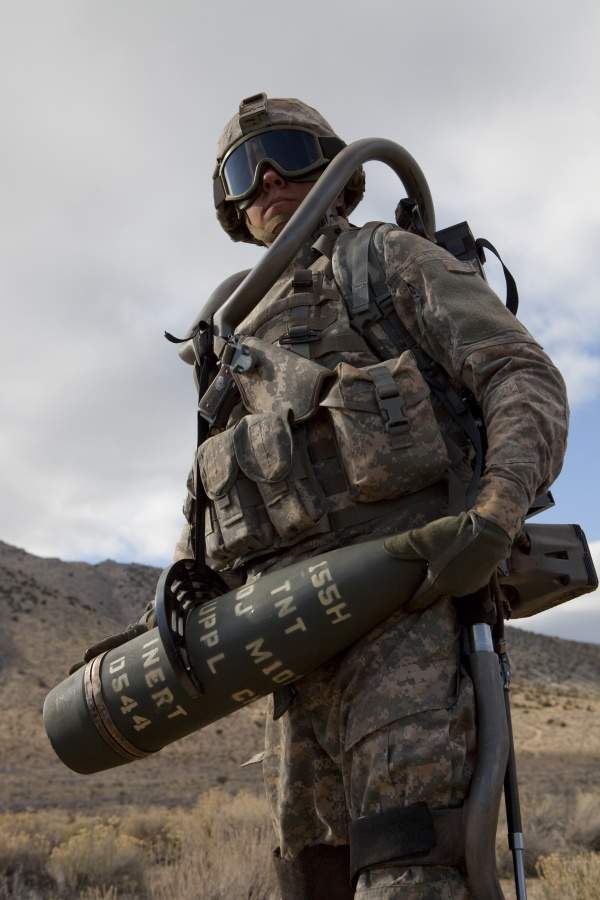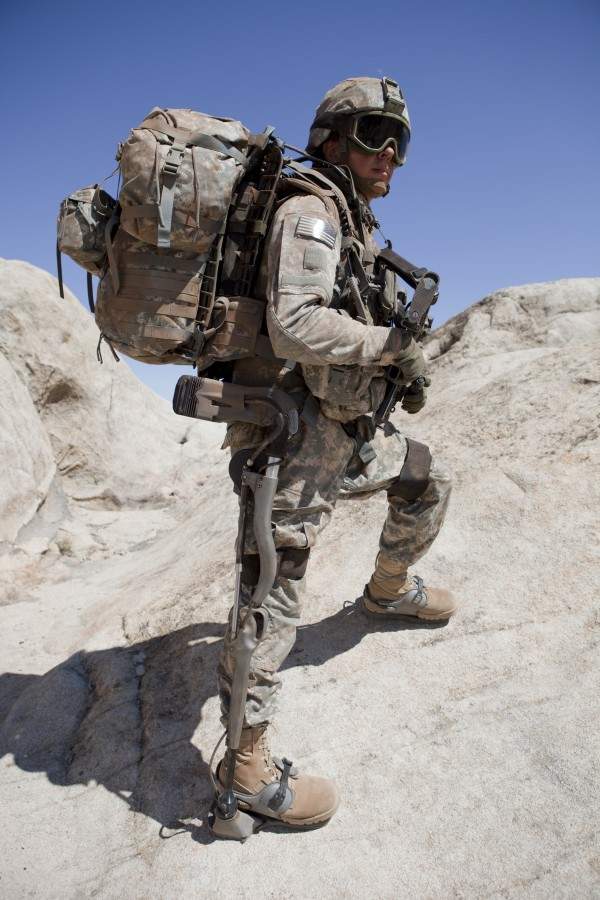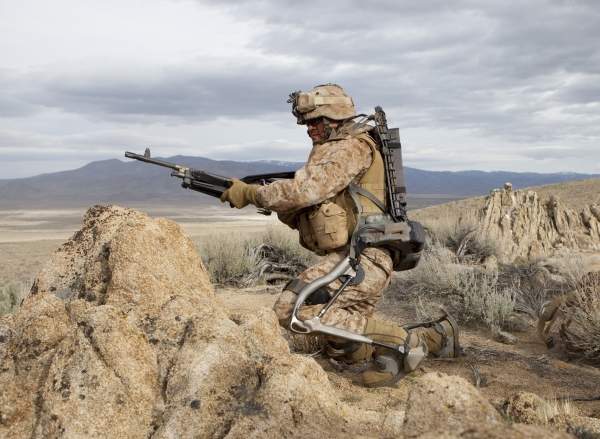The Human Universal Load Carrier (HULC) is a robotic load carriage exoskeleton being developed by Lockheed Martin for dismounted soldiers. The hydraulically-powered HULC enables soldiers to carry heavy loads with minimal strain on their body.
The system is expected to reduce musculoskeletal injuries that occur in soldiers due to lifting of heavy combat loads.
The HULC enables soldiers to carry loads up to 200lb (91kg). The weight of the load gets transferred to the ground through the shoes of the exoskeleton.
This ensures the weight doesn’t shift to the soldier’s body, hampering his movement. The exoskeleton is suitable for use on any terrain.
The HULC was originally developed by Berkeley Bionics (now Ekso Bionics) in 2008. Lockheed Martin acquired the design licence from Berkeley in 2009.
Lockheed Martin will advance the development of the HULC design to provide soldiers with a powerful advantage in ground operations under an exclusive licensing agreement with Berkeley Bionics (TM), a world leader in exoskeleton technologies. Soldiers will be capable of carrying weight of up to 200 pounds with relatively little effort.
Lockheed Martin is also researching exoskeleton designs to support industrial and medical uses.
Exoskeleton development
Lockheed Martin unveiled the HULC system at the Association of the United States’ Army Winter Symposium held in Fort Lauderdale, Florida, in February 2009.
In July 2010, the company signed a $1.1m contract with the US Army Natick Soldier Centre for testing and evaluating the ruggedised HULC design.
Under the contract, the Natick Soldier Centre tested the HULC for its effect on the soldier’s performance, the energy that a soldier spends while using it and the adaptability of the system while carrying various loads and moving at various speeds. The contract has also provided provision for field trials of the system.
The HULC underwent laboratory testing in October 2010, after Lockheed Martin upgraded the ruggedised system for flexibility and suitability to a variety of users. The system was put through biomechanical, dynamic load and environmental testing.
Treadmill testing measured the decrease in metabolic cost of the user. The system’s sustainability in various environmental conditions was evaluated through sand, wind, rain, temperature and humidity testing. The HULC’s tests at the Natick Soldier Centre began in June 2011.
Lockheed Martin is developing a whole line of ground-based soldier technologies that will enhance the performance of warfighters to effectively complete their missions.
The advanced technology systems of Lockheed Martin will also provide ground soldier solutions such as wearable equipment for situational awareness and systems for mobility assistance.
HULC design and flexibility
The HULC is a third-generation exoskeleton device with hydraulic-powered anthropomorphic design and a titanium body.
It is fully un-tethered and flexible enough to allow for squatting, crawling and upper-body lifting of the user. The system weighs 53lb (24kg) without batteries. The design is adjustable to suit users with a height of 5’4″ to 6’2″.
The exoskeleton doesn’t require any external control mechanism as it is controlled by a micro-computer installed within the system. The computer enables the HULC to sense the user’s requirement and adapt to the situation accordingly.
The HULC system can be removed and packed-up in 30 seconds. The modular components of the system can be swapped when the warfighter is in danger and needs greater mobility to escape from the enemy.
Features of the Human Universal Load Carrier
The HULC has a range of 20km when the warfighter moves on level terrain at 4km/hour. It supports front and back payloads. The user can move at a maximum speed of 11kmph long duration and 16kmph burst speed.
The system has various mission-specific attachments and can carry integrated systems such as armour, heating or cooling systems, plus sensors.
HULC shifts the weight from heavy loads to the ground through the battery-powered, titanium legs of the lower-body exoskeleton.
An innovative micro-computer onboard assures exoskeletal motions as per the individual.
It combines two distinct ExoHikerTM and ExoClimberTM features to carry heavy loads during long missions as well as during rapid ascent of steep slopes and stairs It allows user to take up to 200 pounds without any restriction (Strength Augmentation) and it lowers the metabolic cost of its wearer (Endurance Augmentation).
Power supply
The HULC exoskeleton operates on lithium polymer batteries. The power-saving feature enables the system to support maximum load even when the battery power is low.
In January 2010, Lockheed Martin contracted Protonex Technology to develop fuel cell power supply system for the HULC to support extended missions of 72 hours. The HULC with rechargeable power supply enables the soldiers to carry fewer batteries during extended missions.
Powered by proprietary technologies, HULC will enable soldiers to march at lower oxygen consumption and heart rate than any current exoskeleton.
Electronics and hydraulics of Lockheed Martin’s HULC
Lockheed Martin’s exoskeleton is supported on single-board microelectronics fixed within a sealed enclosure. The electronics system is flexible and expandable.
The heat produced from the micro-computer and the other electronics is absorbed by actuators, thus, eliminating the need for fans.
The high-pressure hydraulics system uses standard hydraulic fluid.






